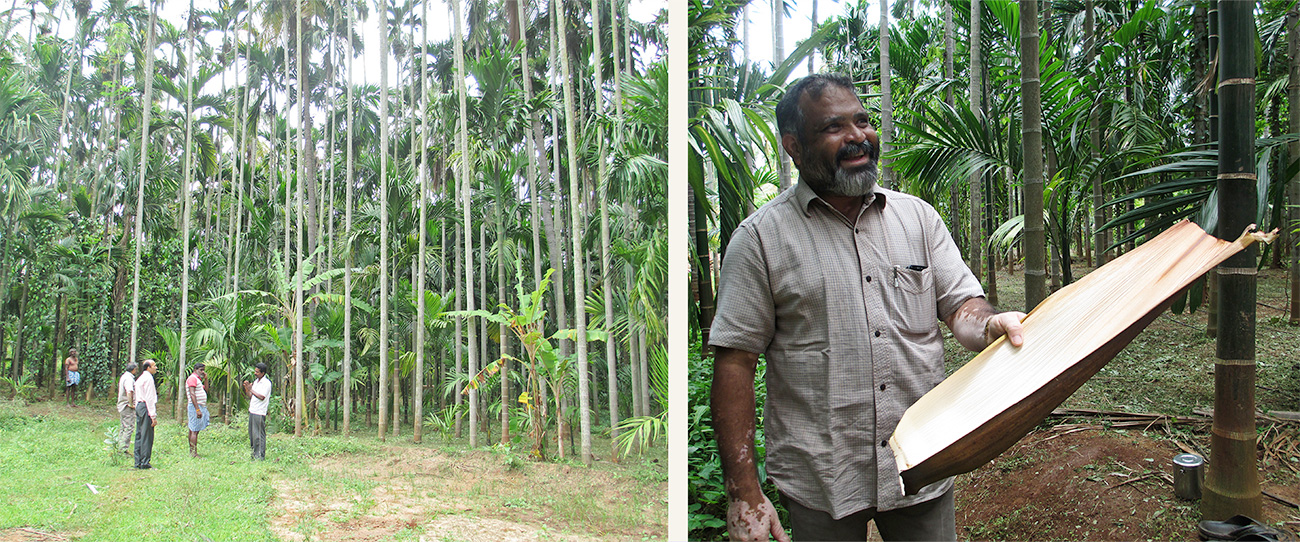PALMLEATHER PROCESS
Palmleather makes for a innovative alternative to conventional animal leather as well as the plastic and rubber faux-leathers. It is fully nature based and socially produced.
To produce it the dry and brittle palm leaves are cured with a biological softening solution designed in 2011 by the Studio Tjeerd Veenhoven. This natural material makes use of a waste stream from the betel nut tree which sheeds eighty million square meters of palm leaves each year.
Palmleather contributes to an organic circular flow of material and carbon cycle with a positive social impact. In its production process it employs the people from Karnataka region, one of the poorest regions of India. The leaves fall to the ground in autumn and are carefully collected by fair trade workers. They are then transported, cut, soaked in the ecological softening solution to be made flexible, and dried leaf by leaf.
Being sourced in nature the material retains the beautiful texture of a palm leaf. Because of the natural leaf fibers the sheets bends better along-fibers and are more stiff in the other direction, a feature which might be familiar to those working with wood.
Palmleather does not contain any harmful or toxic chemicals and no animals were harmed in its production process, therefore its fully biodegradable, vegan and has extremly low water use per square meter.










